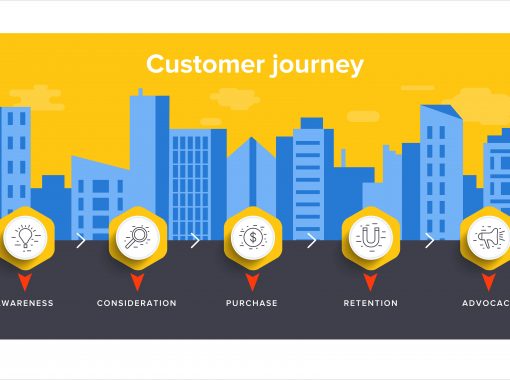
How to Repurpose Content for Multiple Marketing Channels
Content repurposing is the art of creatively recycling your existing content into different formats or for various platforms. It’s taking a single piece of content like a blog post and transforming it from one static asset into many others, like an infographic, podcast, video, or social media post. When you repurpose content, you can reach a much larger audience on a leaner budget when compared with creating only on net new content.
The power of this strategy is in content diversification. Repurposing reinforces your brand voice and messaging across various platforms.
So, whether you’re aiming to boost your site’s visibility, expand your brand’s reach, or enhance your content strategy, learning how to repurpose content can make a real difference.
Understanding the Benefits of Repurposing Content
Content repurposing is not just a creative strategy but also a smart one. In fact, according to a survey conducted by Referral Rock, “94% of the marketers surveyed reported repurposing their content, and the remaining respondents expressed their intention to do so in the future.”
To provide a more detailed breakdown, let’s explore the benefits you can expect when you repurpose content:
- Extending content lifespan and reach. Adapting content for different formats and platforms extends its lifespan. A single blog post can evolve into a series of posts, visuals, videos, and more.
- Enhancing SEO. Creating multiple versions of your content creates more opportunities for keyword usage and backlinking, improving your site’s search engine visibility.
- Efficient use of resources and time. Creating fresh content from scratch requires considerable time and resources. But with content repurposing, you can make the most of what you already have, saving time, energy, and money.
- Improved audience segmentation. By tailoring the content to different channels, you can attract new audience segments that prefer consuming information in specific formats.
Bridge the gap between your content and target audience and maximize your efforts for better returns on investment.
How to Repurpose Content in 4 Steps
As with any B2B content strategy, you want to maximize the return on your investment in your long-form content. Repurposing can help you do that.
We’ve broken it down in a quick step-by-step guide to help you learn how to repurpose content:
- Identify your most popular content. Analyze your content analytics and identify top-performing posts or pieces.
- Determine potential formats and channels for repurposing. Consider which platforms can benefit from your content, such as email marketing, podcasts, and infographics.
- Transform and repurpose your content. Start by understanding the format’s requirements and adapting your content. For instance, a blog post can be turned into social media posts with catchy headlines or used as a script for a video or podcast.
- Promote your repurposed content. Don’t forget to promote your repurposed content on the respective platforms. Use best practices for each channel and ensure your content matches users’ expectations.
There are nuances within each of these steps depending on which type of content you will create and what the source content is. Over time, you and your team should establish a repurposing workflow, where goals, expectations, and responsibilities are clearly defined. This will help you work scalably and effectively.
Next up, we’ll give you a few easy formulas you can use to guide your content repurposing strategy.
Creating Social Posts from Blog Posts
Transforming a blog post into social media content involves distilling the core message of your article and making it snackable for a social audience.
Here’s a formula you can use:
- Identify key points. Pick three to five key points or takeaways from your blog post.
- Craft concise messages. Write a short, engaging social media post for each key point.
- Incorporate visuals. Add relevant images or graphics to each post to increase engagement.
- Include CTAs. Encourage readers to check out the full blog post with a compelling CTA.
Transforming Whitepapers Into Email Campaigns
While whitepapers can sometimes be dense to read, they’re valuable resources that can be repurposed into an email campaign series. Because a whitepaper speaks on a subject thoroughly, there’s plenty of information to use and break down into digestible emails with accompanying visuals.
Here’s a formula you can use:
- Segment information. Break down the whitepaper into smaller sections or key points.
- Create an email series. Develop a series of emails, each focusing on one section or point of interest with added visuals.
- Incorporate authority elements. Use statistics and direct quotes from the whitepaper to add authority to your emails.
Repurposing Case Studies into Video Content
Like whitepapers, case studies are a great content source for various audiences and channels. Repurposing these into video content amplifies their effectiveness and appeal. Videos bring case studies to life, showcasing the human element behind data and stories. This format captures the audience’s attention and is more accessible, catering to different learning preferences.
Here’s a formula you can use:
- Storyboard your success story. Break down your case study into a clear narrative with a beginning (the problem), middle (the solution), and end (the results).
- Create engaging visuals. Use graphics, animations, or real footage to illustrate your story.
- Add soundbites. Incorporate key quotes or testimonials from the case study into your video to add a personal touch.
- Choose the right platform. Consider where your audience spends their time and choose the platform accordingly.
Not every content repurposing strategy will work for every business. Experiment with different formats and channels to find the ones that best suit your brand.
How to Establish a Content Repurposing Workflow
The point of any strategy is to work smarter, not harder. So, that means setting up an effective content repurposing workflow should be a priority.
Here are some essential aspects of a content repurposing workflow:
- Strategic Selection of Content: Focus on selecting content that can be seamlessly adapted into different formats. This includes evergreen topics, high-quality, in-depth articles, and content that has sparked considerable engagement or conversation.
- Dynamic Content Organization and Scheduling: Develop a more dynamic content calendar that schedules the release of repurposed content and tracks its performance. Use this tool to experiment with different publishing times and platforms and to maintain a steady flow of content across your channels.
- Feedback and Iteration: Incorporate a system for gathering feedback on your repurposed content. Use audience comments, engagement metrics, and performance analytics to refine your repurposing strategy.
- Cross-Platform Compatibility: Ensure that the repurposed content is optimized for different platforms. This involves more than scheduling; it’s about adapting the content to fit the context and audience of each platform. For example, content for Instagram might need more visuals, while LinkedIn content might be more professional and data-driven.
You’re not just recycling content. You’re transforming it to add value and sweeten your overall marketing strategy.
Examples in Action: B2B Companies Acing the Repurposing Game
Several B2B companies have effectively harnessed the power of content repurposing. Here are a few standout examples.
Moz
Original Content: In-depth SEO guides and research. Videos.
Repurposed Content: Tutorials, webinars, blog posts, social media content, emails.
Example: Moz’s Whiteboard Friday series is an excellent example of repurposing in-depth SEO knowledge into video content and then repurposing that video to create content for a variety of channels. For example, their piece on On-page Video SEO is an informative learning video that they turned into a LinkedIn post, a blog post, and infographics.
Hubspot
Original Content: In-depth industry reports.
Repurposed Content: Blog posts, newsletters, lead magnets, podcasts, and more.
Example: Hubspot’s State of Marketing 2023 report is a great example of this. The report itself is a lead magnet that offers an in-depth look at a topic relevant to their target audience. They repurposed this into a blog post, a podcast, a blog refresh, and other formats to reach more audiences and extend the ROI of the report.
Skillsoft
Original Content: In-depth research reports.
Repurposed Content: Blog posts, social media graphics, podcasts, and more.
Example: Skillsoft’s 2023 Corporate Social Responsibility at Work report is a piece of long-form content the company likely spent much time and effort to create. They used that content to create a blog post, a social media graphic, and other content, likely with a much leaner investment of time and money, since they were able to repurpose the report’s key points and research.
Make Your Content Go Further
Repurposing content is an ingenious way to maximize your content resources, bringing you closer to your business goals. So, why wait? Press play on these strategies to help your content go further.
If you’re looking for professional help to guide your content repurposing efforts, explore outsourcing your content writing needs. With a team of experienced content creators on your side, you can make your content work harder for you! Contact ContentWriters today.
Sallie’s natural attraction to things with high impact led to a career in SEO and content marketing. She has worked on many projects in the digital space, working across industries to help brands create meaningful content.




